 The site is in the process of being updated.
The site is in the process of being updated.This page will soon have a new design.
Indonesia, this country from the other end of the world, its 17.000 islands trapped between Malaysia and Australia, its bewitching and exotic names, Borneo, Sumatra, Java, Lombok… its 150 volcanoes, majestic and terrifying peaks and lakes amongst which the sadly famous Krakatoa, Agung or Batur… its wonderful paddy fields…
And, in the middle of all this, irresistible, Bali! Treasure of the archipelago! Paradise Island! Gods’ Island! Inspired Island!
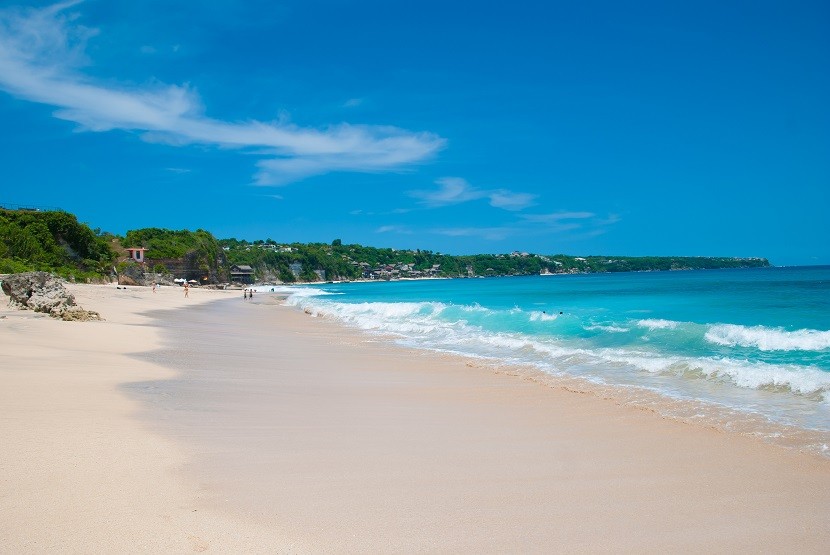
Bali, Dreamland beach. Photo credit: shutterstock.com
If evocating this name sounds like pure, intimate and meditative and instantly provokes your mind to wander in another place, what can we really expect from this small piece of Asian paradise?
Bali’s ID
7 hours away from Europe, amongst the more than 17.000 islands constituting the Indonesian archipelago, between Java and Lombok, is an island with a name inviting to dream and to travel, Bali.
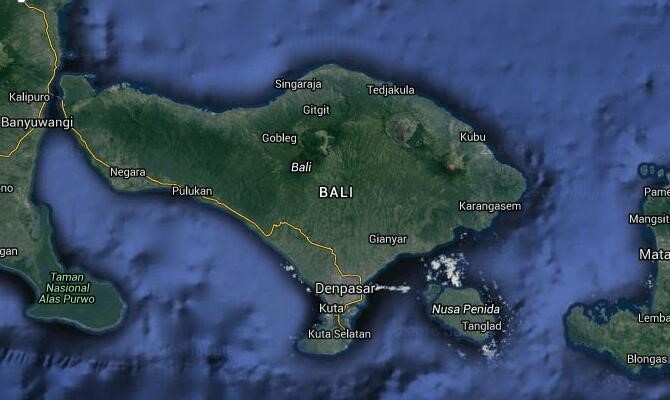
Fashioned by volcanoes dominating the landscape, the island is crossed by a mountain range where culminates the ‘mother of all mountains’, le mount Agung and its 3142 meter of altitude (volcano still active), and punctuated by many lakes, rivers, gorges, valleys… Its coasts are bordered with magnificent white sand beaches in the South and black sand beach in the north, surrounded by sumptuous coral reefs.
Main tourism destination in Indonesia, largest island of the homonym province, with a superficies of 5637 km2 for a population of almost 4 million inhabitants, its capital city is Denpasar.
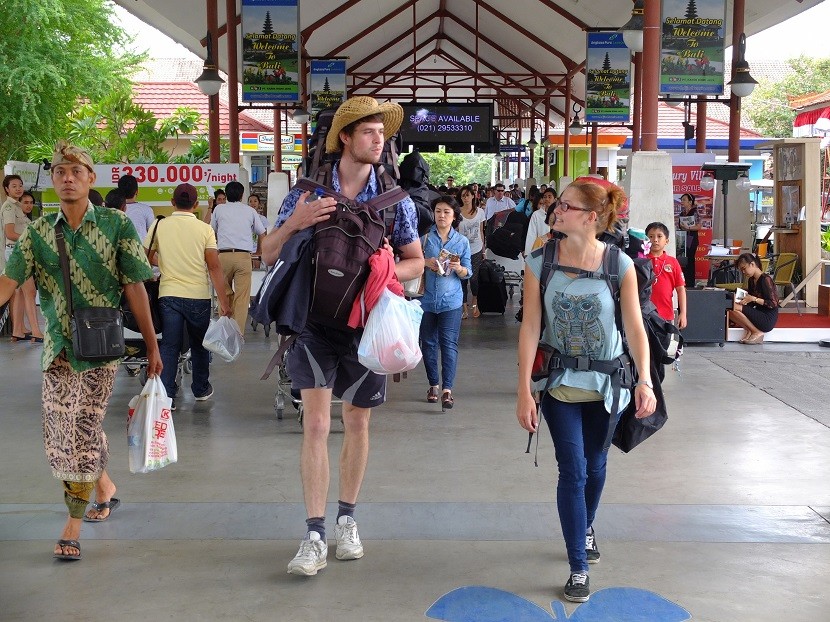
Denpasar airport. Photo Shutterstock.com
If the country is mainly Muslim, Bali is the only island of the archipelago that remained mostly Hindu. Some Balinese kept their traditional religion, heir of Majapahit, called Agama Tirta "the religion of water". The 5 main principles (panca srada) of this religion are believing in: a supreme god, the soul of the spirit, reincarnation, the law of reciprocity of actions (karma phala) and the unity with the sacred (moksa). The 3 moral rules (Tri kaya parisudha) of the religion are: think the good (manacika), speak honestly (wacika) and do the good (kayika). The biggest and most devoted temples are Besakih, d’Uluwatu and Tanah Lot.
Official language is the Bahasa Indonesia, close to Malay, and exists aside many other local dialects. Indonesian, the national language of the country, is for Balinese a second language. A vast majority of the population is speaking English, even more in touristic areas.
Official currency is the Indonesian rupee.

Bali has a tropical climate with 2different seasons, a dry season from April to October and a wet season from November to March. Near the equateur, temperatures are constant all year round around 28 degrees, going from 15 to 34 degrees depending on the season and the altitude.
Bali is cultural jewel. Very lively and impressing, Balinese culture did not denature itself. The most spectacular representation of this culture can be found in traditional dances, music and songs. Dances like ‘legong’ and ‘kecac’ are always executed by very young girls and are the most refined expression of the Balinese cultural tradition. More than 2.000 dance crews are giving representation in temples, dances being linked with the Holy and the Gods. They show epics from famous Hindu texts such as the Ramayana. The ‘gamelan’ is the traditional instrument played during the ceremonies and offers a vibrant and bewitching melody. Many festivals brighten the life of the population. Balinese New Year ‘Nyepi’ is celebrated March and April and is symbolizing the end of the Hindu calendar ‘saka’. It is made of processions and fests bringing the inhabitants in the streets holding paper monsters in order to oust evil spirits and purify the island. Then, silence becomes the rule, inhabitants stay home and don’t use lights for 24 hours. ‘Waicak’, in April and May celebrates the birth, the illumination and the death of the Buddha. August the 17th is Independence Day, the Indonesian National Day also called ‘Hari Proklamasi Kemerdekaan’. On this occasion, huge parades occur, especially in Jakarta.
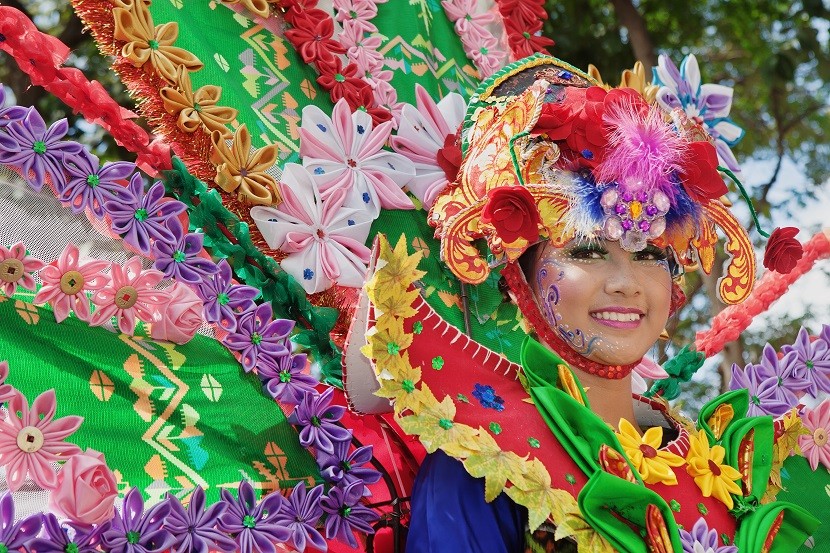
Photo credit: shutterstock.com
This incomparable cultural richness can be found in each and every ceremony and in each and every temple of the island. All year long, ceremonies happens in various temples, for example the Cremation of the Deads is a public ceremony which is always astonishing for the ones that are not used to this, while the ‘Teeth Filing’ is a fastuous and surprising ceremony symbolizing the entry of teenagers into adulthood. Many others fests games, concourses (birds singing, kites) and ceremonies happens on a daily basis.
Economically, Bali is articulated between 2 major sectors, agriculture and tourism. Even if tourism is taking the major part of it in the economy, agriculture is still the economic sector which is employing the most people. The main products cultivated on the island are rice, Arabica coffee, cacao, clove and vanilla. Located in the plateau areas, agriculture is organized in traditional exploitations called subak and is based on the Balinese Philosophy ‘Tri Hita Karana’ principles, extolling sustainable development.
Balinese art and craft also has a prominent part thanks to jewelry, sculptures made out of wood and stone, teak furniture’s, weaving with the local Batiks, music instruments traditional puppets… Bali is also known for its paintings, especially the easily recognizable naïve paintings showing vegetation animals and humans.
Finally, Balinese will ravish the gluttons. If the menu is not extremely diversified, the cuisine is tasty and distinguishable by its use of a lot of spices produced in Indonesia. Rice and noodles are the basis, served with fried or ticked meat, fish, seafood. Give a try to the babi guling (fried pork cooked on a stick), urab and bebek betut (duck) or other specialties such as Saté, Nasi campur, Lawar, Mi goreng or Krupuk or Pisang goreng.
Concentrated in the South of the island, tourism is the biggest resource of Bali.
The must sees in Bali
A sweet climate all year round, an incomparable culture, beautiful landscapes, temples, paddy fields, volcanoes, beaches… The Island of the Gods is not just a postcard of a sunset over the ocean. Bali kept its uniqueness, its culture, its rituals, its dances, its warm welcoming. Paradisiacal, bewitching, mysterious, capricious, spectacular, Bali is a one destination of its kind, full of hidden treasures offering seductive moments to any traveler ready to take the plunge.
Relaxing place by nature, the main resorts are located in Kuta, heaven for surfers, Nusa Dua and its 4 stars’ hotels, Jimbaran and its concentration of paradise beaches and open air restaurants, he calmer and more hipped Legian or Sanur and its family ambiance.
In the North, you will find the best diving spots while inland the activities are more nature oriented, canyoning, going down rivers or trekking.
Be aware that people go to Bali for its beaches and its weather, and the same people are going back to Bali for its intense cultural life and the unique beauty of its landscapes, temples and paddy fields.
Boiling over with natural and cultural treasures, what are the main interest points when visiting Bali?
Talking about culture, Ubud!
In the center of the island, Ubud is the cultural core of Bali. Epicenter of Balinese art, Ubud kept untouched the local traditions and hosts everyday different kinds of spectacles, dances ’legong’, puppet shows ‘wayang kulit’. Number one location for the pleasure of the soul, it is also in Ubud that you can find the best pieces of Balinese painters and sculptors in museums such as the ‘Agung Rai Museum of Art’ or the ‘Neka Museum’.
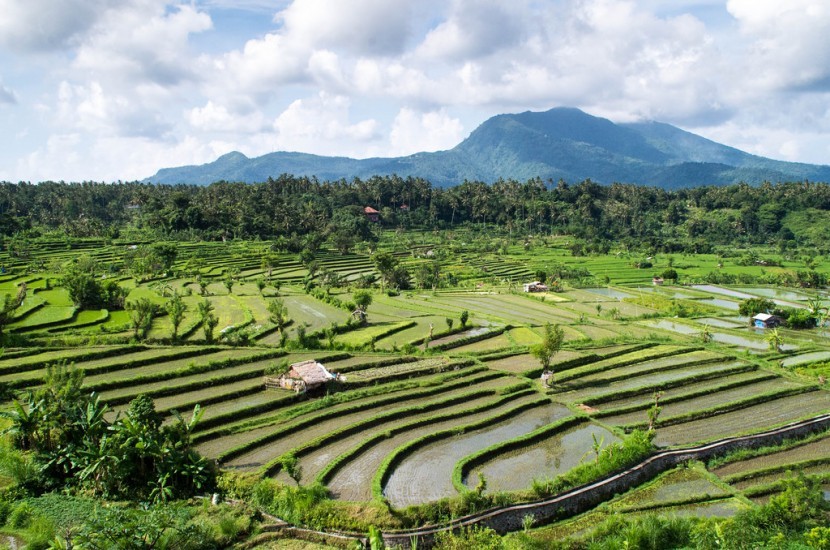
Ubud. Photo credit: Photopin
Pleasures of the soul, and pleasures of the body. Ubud is famous as a ‘wellbeing’ destination thanks to its traditional medicine center. Spa, massage, yoga… Ubud is an ideal place to rest and energize oneself.
Ubud and its surrounding area, a walk in the Indonesian countryside
Tenth and tenth of trekking trails are accessible if you want to walk or bike around, allowing you to wander around the stunning inland landscape. From paddy field to picturesque village, go and discover Bali visiting the sacred spring ‘Tirta Emoul’, the ‘Gunung Kawi’ temple and the scenic paddy fields of Jatiluwih, which is considered one of the most beautiful in Bali.
The breathtaking mount and lake Batur
Undoubtfully one of the best site in Bali, the show offered by the volcanoes Batur and Abang are simply grandiose.
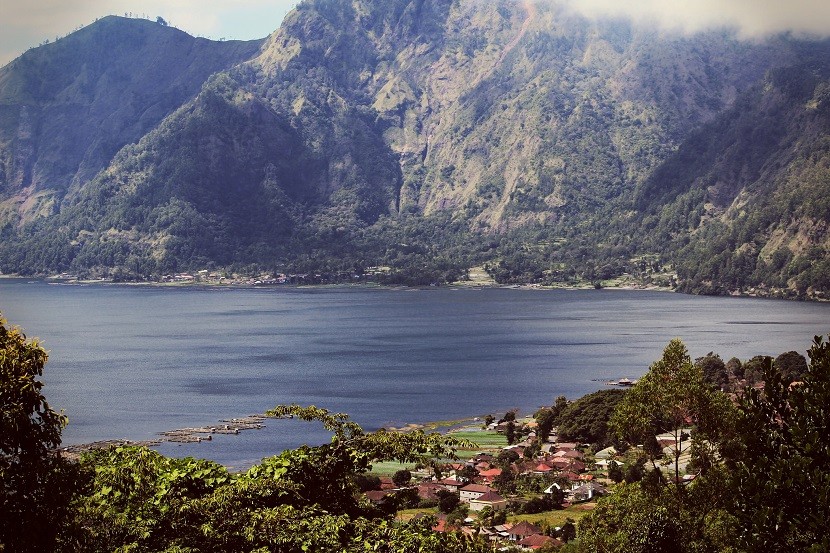
Lake Batur, Bali. Photo credit: flickr
If most of the visitors are ok with the mountain, it would be very pity not to push further down the volcanoes to reach the lake, nested in the crater of the volcano. 10 kilometers of diameter and crystal clear waters, their color being nuanced depending on the incredibly beautiful reflection of the sky on them. Lucky and stunned the ones taking the ride to the lake. The most courageous will get ready to climb up the volcano in an unforgettable ascension, gratifying those 2 hours of efforts with astonishing panoramas and a magical sunrise.
On the East coast, Ahmed
Trapped between sea and mountain, the coastal road of the East meanders small and picturesque villages all along the Lombok Straight, under the look of the perfectly conical Agung volcano.
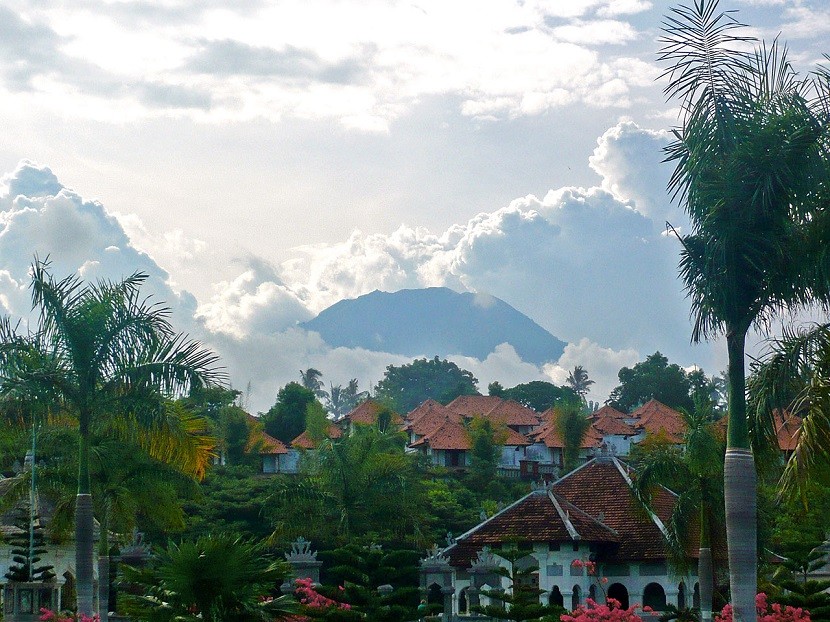
Agung volcano. Photo credit: flickr.com
On the shore, creeks, beaches, coconut trees, palm trees, banana trees, bays where are parked the ‘Prahus’, these typical pendulum canoes with their triangle sails. Beaches where it feels good to unwind for a while between snorkeling, swimming, sunbathing. Once again the most courageous will try to stop this appeasing retreat climbing the other volcano dominating the island.
Sidemen or the charms of paddy fields
On the other side of mount Agung, located in the heart of the valleys chiseled by paddy fields, here you are in one of the most authentic and peaceful place in Bali. Calm is the lord of the place, and it is heartbreaking to know that you will one day have to go away from this heaven of serenity. Made popular in the 1930’s by many artists, painters like Walter Spirs participated in the paradise fame of Bali drawing and painting the landscapes around Sidemen.
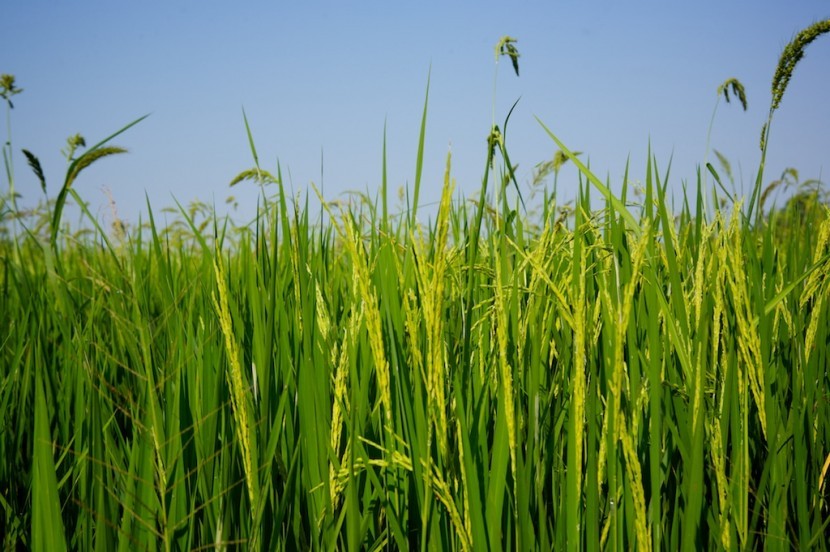
Rice field. Photo credit: flickr.com
The surrounding areas are not uninteresting. East, Tirtagganga is a piece of art in the middle of the paddy fields. Gardens, statues and fountains constituting the ‘Water Palace’ create a unique place where all the pieces are perfect. Going North, the Besakih temple is a must stop. Largest temple in Bali, it is also the most revered temple of the island. It is dedicated to the 3 main Hindu deities, Brahma, Vishnu et Shiva.
Islands; Nusa Lembongan et Nusa Penida
These 2 small islands located South of Bali are much less visited by locals, thus by tourists. People believe demons are populating the islands. Tourism tries to reach the islands but they are now still as they’ve always been, untouched.
The tiny Lembongan features pristine beaches covered with a credibly white sand and bordered by a splendid coral reef. On the North, a mangrove is covering the shore. Going around the mangrove in a canoe is quite an experience and offers amazing views on Bali and its volcanoes.
Larger than its little sister, Penida is also more intimate. Its chaotic relief and its dense forests makes its wilder and natural.
Sunset, Tanah Lot et a Uluwatu
As touristic as it can be, Tanah Lot is one of the most visited site on the island, even more at sunset when the light plays with colors and set the horizon ablaze, with in the background a mysterious temple dedicated to the spirits of the ocean, who, since the XVIth century, is resting on a piece of black rock isolated in the sea and blown by the trade winds and the waves, transforms the tourist in a dreamer. Another temple and another sunset, on the Bukit’s cape this time. The ‘Luhur Uluwatu’ temple. On the flank of a cliff populated by monkeys, the surreal atmosphere is magnified by the representations of kecac happening every evening.
Surf and scuba-diving Paradise
Bali, is for sure an island. Talking about islands, obviously means talking about the ocean. If the land attractions of Bali are undeniable, the sea will not deceive you. Surfing or scuba diving, take a ride over and under the Balinese waters in some of the most famous and the best spots in the world.
Very popular amongst the surfing community, Bali as something to suggest toe. Beginners will practice their skills near Kuta and Legian beaches while pro surfers will ride the fantastic waves breaking near the cliffs of Uluwwatu or on the Padang-Padang spot.
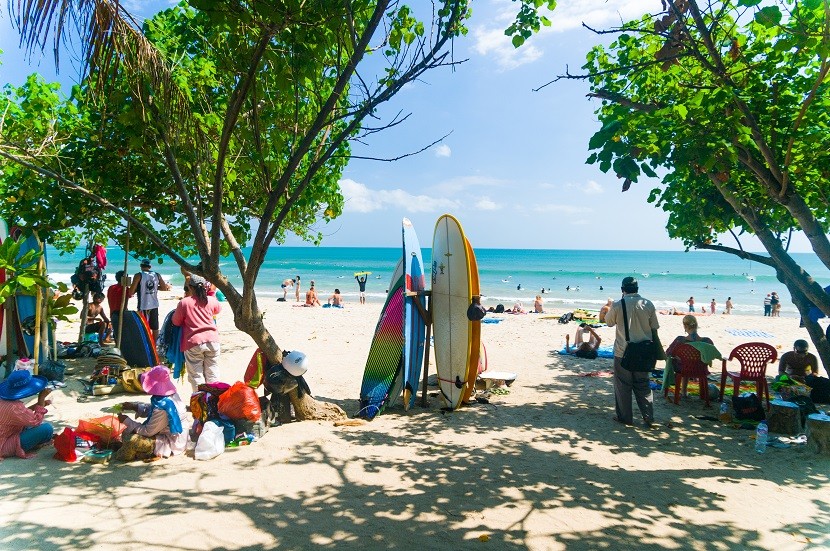
Bali, Kuta. Shutterstock.com
For scuba divers, the neighboring reefs are just exceptional, especially on the East coast near Ahmed. Gear up your goggles and scuba to snorkel, or your oxygen bottles for real diving and pay a visit to wonderful sites such as the sunk USS Liberty, now home of corals and fishes, off the coast of Tulamben (beginners and confirmed divers), or the sandy ocean ground around Nusa Penida and Nusa Lembongan, plentiful with fishes and corals (suitable for experienced divers) and Menjangan Island, situated in a national and preserved area.
South, Kuta, tourism high end
Kuta is probably not the best location of the island, but is anyway a place you will want to go to if you are visiting Bali. South of Denpasar, Kuta, Sanur, Legian, Seminyak, Petintenget-Canggu are the main tourism hub. Here is the crowd. A crowd of hotels, restaurants, bars, clubs, shops… and a crowd of tourists. Nothing clearly exotic around, but the tourism industry didn’t totally denature the relaxed atmosphere you can find everywhere else in Bali. Less authentic, more standardized, Kuta Beach fit better the young and crazy party goers, Seminyak a bit classier, Petitenget-Canggu eloquently rich.
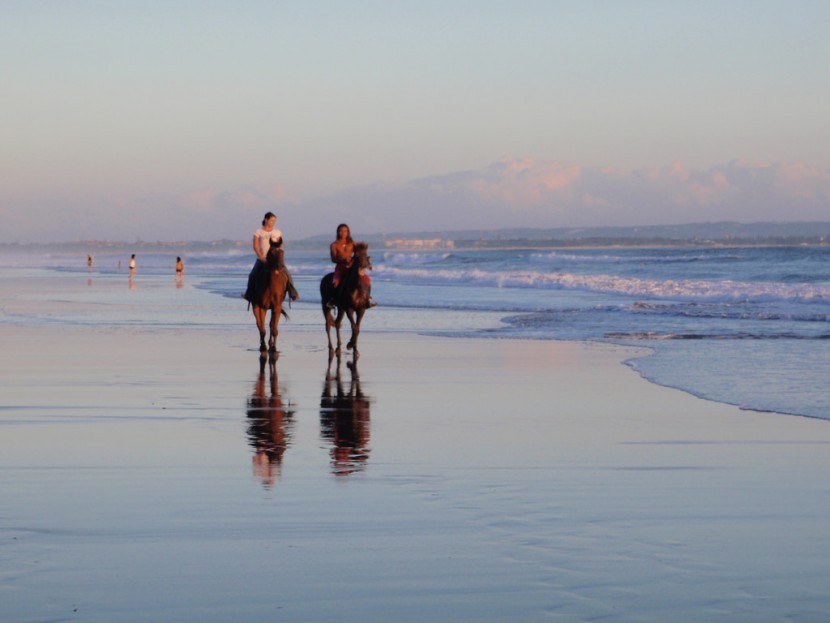
Seminyak Beach. Photo credit: flickr.com
The beaches bordering this coast are stunningly beautiful. Long stripes of white sand stretching as far as one eye can see, along which you will find bars and restaurants amongst the best on Bali.
About the nightlife, better to go to Jalan Legian and Jalan Pantai. Neon, beers, young and beautiful people… Party in Kuta happens there! More relaxed ambiance in Legian on Jalan Sahadewa and Jalan Padma Utara, when in Seminyak, it is completely classy and ultra-chic with clubs such as the worldly famous Ku De Ta and Cocoon Beach Club.
Bali is a dream made true. Homesickness guaranteed. Breathtaking landscapes, a nature made dangerous by volcanoes and huge surf but also made majestic by these same dangers, culture and ancestral traditions kept vivid in their most picturesque way, activities as diversified as they are hectic, inhabitants welcoming you like you were the king.
There are so many things to do and see in Bali, so many reasons to visit this wonderful island, little piece of Indonesia completely different from Indonesia. Pack your suitcase and take off. Next stop, Bali!
